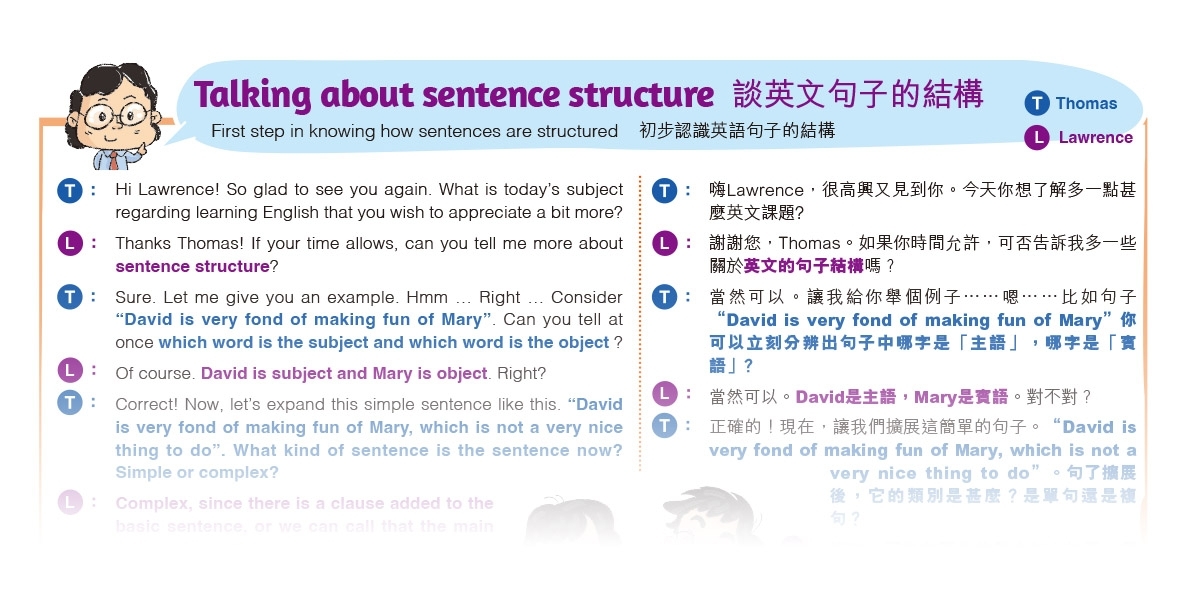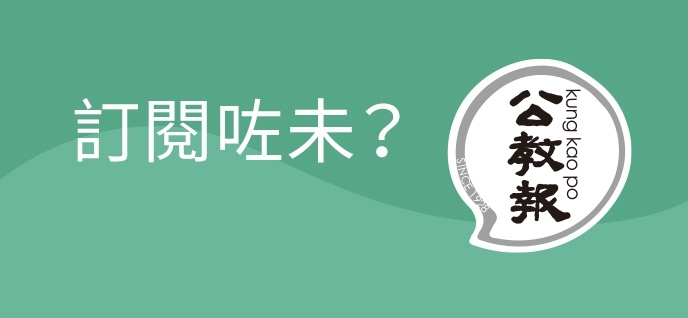
Talking about sentence structure
談英文句子的結構
First step in knowing how sentences are structured
初步認識英語句子的結構
T: Thomas, L: Lawrence
T: Hi Lawrence! So glad to see you again. What is today’s subject regarding learning English that you wish to appreciate a bit more?
L: Thanks Thomas! If your time allows, can you tell me more about sentence structure?
T: Sure. Let me give you an example. Hmm … Right … Consider “David is very fond of making fun of Mary”. Can you tell at once which word is the subject and which word is the object ?
L: Of course. David is subject and Mary is object. Right?
T: Correct! Now, let’s expand this simple sentence like this. “David is very fond of making fun of Mary, which is not a very nice thing to do”. What kind of sentence is the sentence now? Simple or complex?
L: Complex, since there is a clause added to the basic sentence, or we can call that the main clause. Correct?
T: Exactly. So, you can see that the structure of the sentence is now changed a bit, but the basis still remains, which is now the main clause of the complex sentence.
L: I am getting it now.
T: 嗨Lawrence,很高興又見到你。今天你想了解多一點甚麼英文課題?
L: 謝謝您,Thomas。如果你時間允許,可否告訴我多一些關於英文的句子結構嗎?
T: 當然可以。讓我給你舉個例子⋯⋯嗯⋯⋯比如句子 “David is very fond of making fun of Mary”你可以立刻分辨出句子中哪字是「主語」,哪字是「賓語」﹖
L: 當然可以。David是主語,Mary是賓語。對不對?
T: 正確的!現在,讓我們擴展這簡單的句子。“David is very fond of making fun of Mary, which is not a very nice thing to do”。句了擴展後,它的類別是甚麼?是單句還是複句?
L: 複句,因為在原先的基本句上加了一個從句,或者我們可以稱之為主句(main clause)。對嗎?
T: 正確。所以,你可以看到句子的結構現在出現了一點變化,但是基礎原則仍然不變,現在成了複雜句子的主句。
L: 我現在明白了。






